APARTHEID'S MISSING
Window of opportunity to find apartheid’s missing victims closing unless old assassins tell all
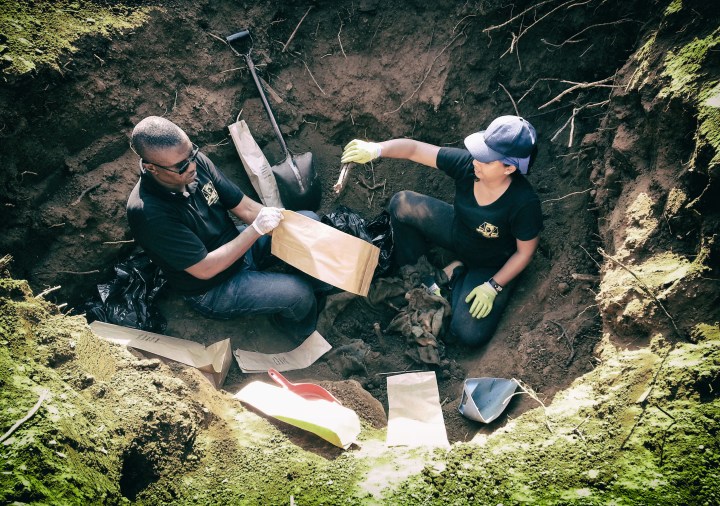
The Missing Persons Task Team has so far found the remains of 138 people murdered by apartheid forces, but as their search continues they increasingly need old assassins to spill their secrets.
From above, the headstones in the Winterveldt cemetery blink like the scales of fish in the morning sun.
But the team watching the monitor, beamed down from the drone flying above, aren’t too concerned about the shiny tombstones. It is the rounded mounds of earth that show up clearly on the screen, that pique the interest of the members of National Prosecuting Authority’s Missing Persons Task Team.
“You see each of those little hillocks is a grave,” explains Madeleine Fullard, the head of the Missing Persons Task Team.
“We look for signs of human activity on them, like a wooden cross or something and then eliminate those. Eventually we are left with the bare ones.”
One of those bare mounds, tucked in the corner of this cemetery that is situated just north of Pretoria, is believed to hold the remains of a young man who Fullard and her team have been searching for for over a decade.
The remains belong to a member of the so called Mamelodi 10, a group of youths who were tricked into climbing into a Kombi in June 1986, on the pretext that they were to be taken across the border to join the ANC in Botswana.
Security forces ambushed the Kombi near Nietverdiend, in Limpopo and then after making it look like the vehicle had been involved in an accident, set it and its occupants alight.
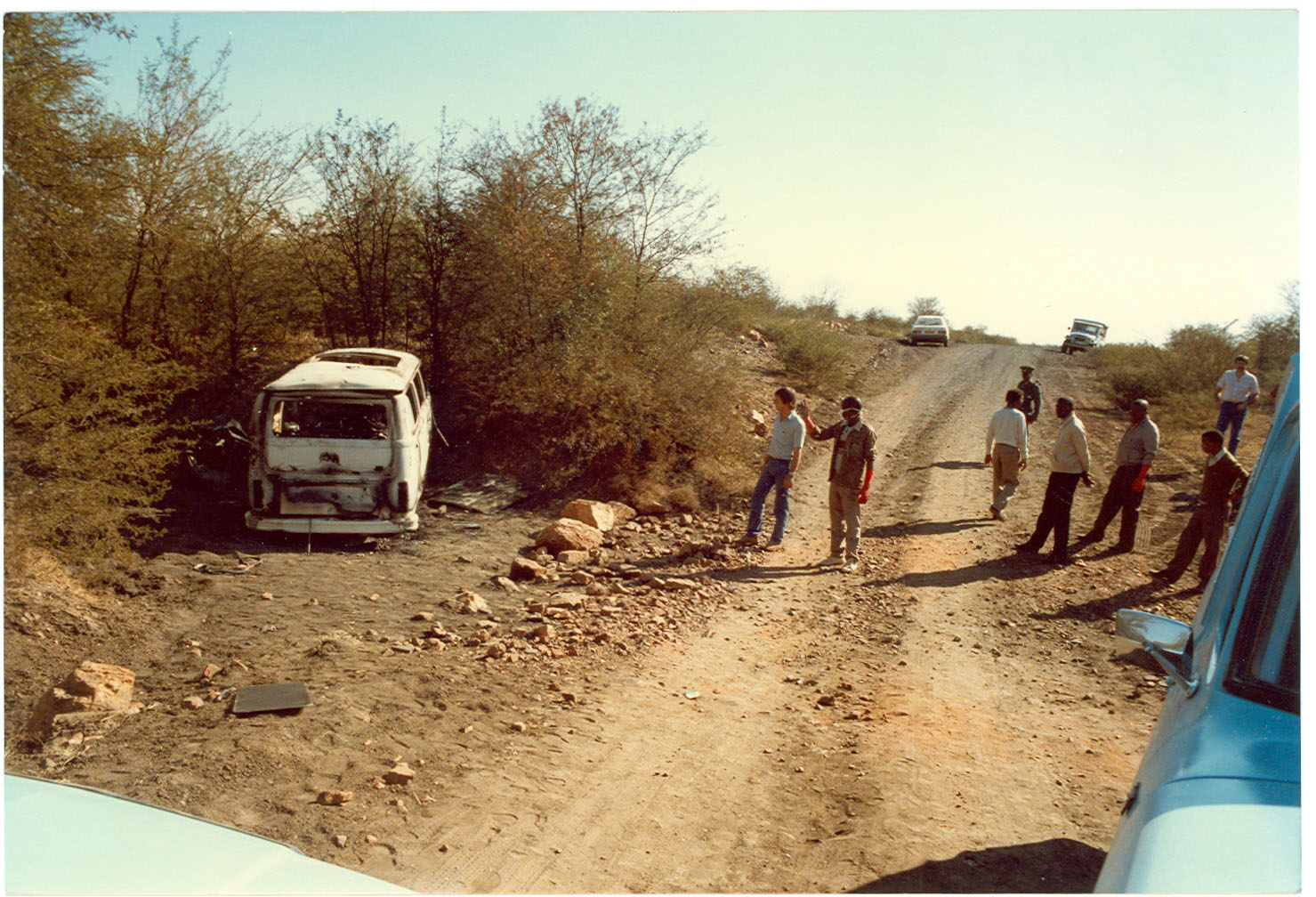
Photo: A police photograph, from June 1986, of the burnt out Kombi, in which the Mamelodi Ten were burnt to death. Security forces had set it up so that it appeared that the Kombi had been involved in an accident.
Nine of the Mamelodi 10 have been found and their charred bones were handed back to their families in October 2008. The handover ceremony had 10 coffins on display, the empty casket representing the still missing member.
The remains of the nine were not individually identified, as their bones were too badly burnt to extract DNA. So their remains, said Fullard, were divided among the 10 families and buried in the Pretoria West cemetery.
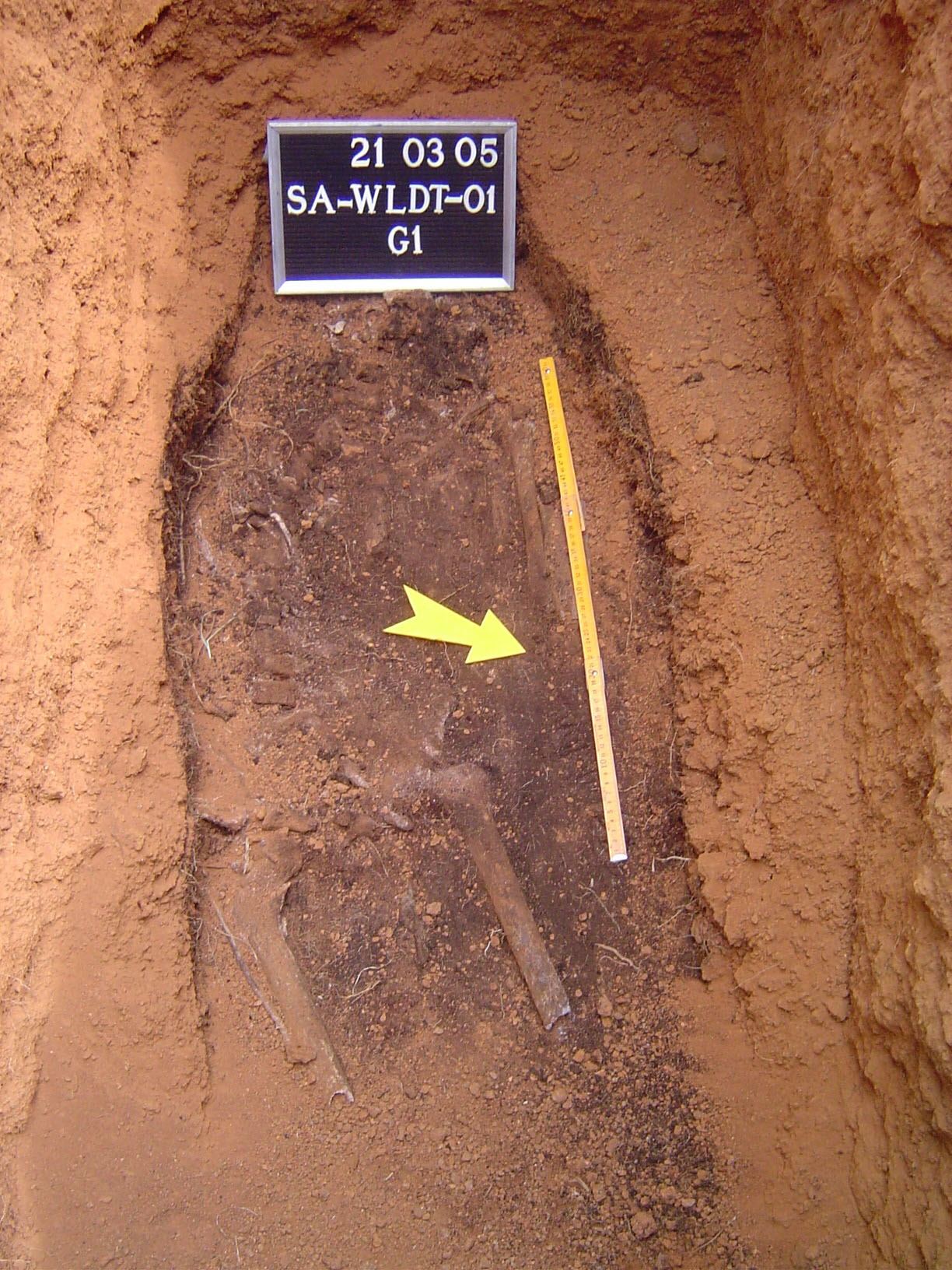
Photo: The badly burnt remains of one of the Mamelodi Ten, who was exhumed in 2005. The National Prosecuting Authority’s Missing Persons Task Team are still searching for the last member of the Mamelodi Ten, who were killed in June 1986.
The missing member of the Mamelodi 10 is not the only struggle victim that Winterveldt has to give up. There are four others.
“This will be our last ditched effort to look for those five, if we fail, then I think it is pretty much the end of the road for our efforts at Winterveldt,” says Fullard.
For this last try the team decided they needed a bird’s eye view of the cemetery. This they hope will make sense of the cemetery which has become a confused mess of haphazardly buried bodies.
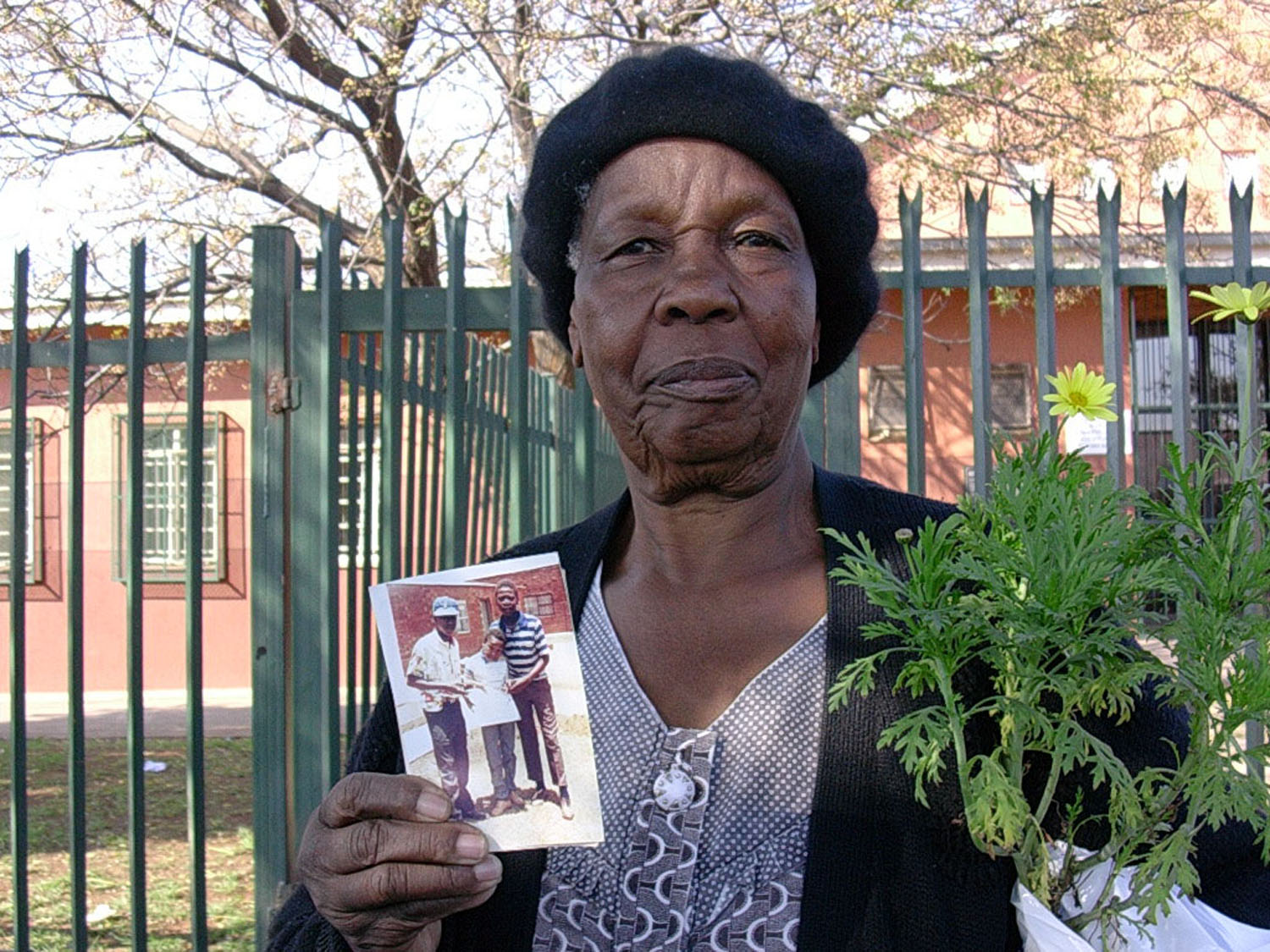
Maria Ntuli stands with a picture of her son, Jeremiah (in the stripped shirt). He was a member of the Mamelodi Ten.
“We are basically trying to solve the mystery of a disorganised cemetery,” explains Fullard.
“Partly we have felt defeated by the disordered structure of the cemetery, we could never get a grip on this enormous cemetery.”
The drone flew a set of pre-programmed circuits over a section of the cemetery.
“Every single grave is visible, whether it has a tombstone or not .All of those aerial photographs are stitched together by software into one enormous photograph on to which we can plot the graves we have already opened and those we need to open.”
The team is still processing the information and plans to head out to the cemetery soon.
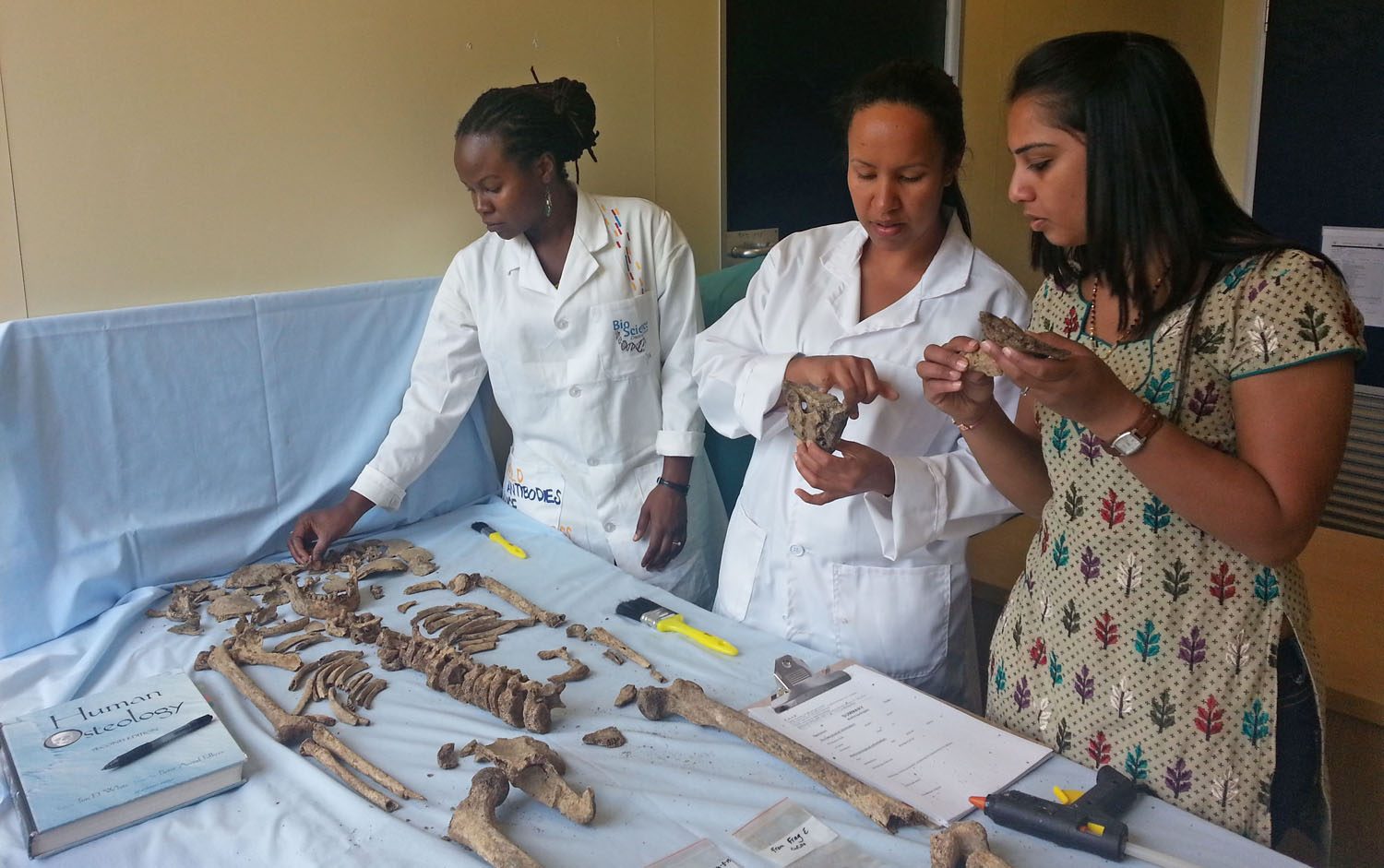
Kundisai Dembetembe (left), Colonel Lache Rossouw and Dr Kavita Lakha examine the remains of one of the missing.
In just over a decade the Missing Persons Task Team has recovered the bodies of 138 men and women who fell fighting apartheid between the 1960s and late 1980s. But for the team, time is running out as relatives of the missing are getting older and dying off. The search at times is also getting harder as Fullard and her colleagues have to deal with cemeteries where record keeping collapsed in the 1980s and ageing apartheid assassins continue to remain tight-lipped about their past atrocities.
Besides the final member of the Mamelodi 10, there are other missing bodies that haunt the leader of the Missing Persons Task Team.
One of them is Richard Mapela who disappeared in 1979. In frustration Mapela’s sister Rose Matsabu stitched together a banner with the words: “Richard Mapela still missing 1976 June 16.”

Photo: The banner that Rose Matsabu made, in the hope in that it would help find her brother who went missing in 1979. The Missing Persons Task Team are still looking for his remains.
Her plan was to unfurl the banner next to the highway that cuts past close to her home in Orlando, Soweto.
For a while she took the banner to ANC gatherings in a hope that someone would notice and help find him.
“I wanted people to know who Richard was, the new generation know nothing about him ” says Matsabu. She even planned to take the banner to the Winnie Madikizela-Mandela’s memorial that was held at the Orlando stadium, but said she felt too heart-sore to do so.
What is known about Mapela is that he joined the ANC in Botswana and infiltrated back into South Africa in 1979. A member of his group deserted shortly after crossing the border and ratted to the security forces as to where they could be found. Mapela was killed in one of the earliest skirmishes between security forces and MK soldiers.
Initially Fullard suspected that he had been buried in the pauper section of the Zeerust cemetery, but despite what appeared to be a good lead, when the grave was opened they discovered it wasn’t him.
Now she believes that security forces might have brought his body to Pretoria, where he might have ended up in the Mamelodi cemetery. There is a cemetery record for an unidentified man who died at around the same time as Mapela.
“We just want to know where they buried him, so we can bring back his bones and bury him ourselves,” says Matsabu.
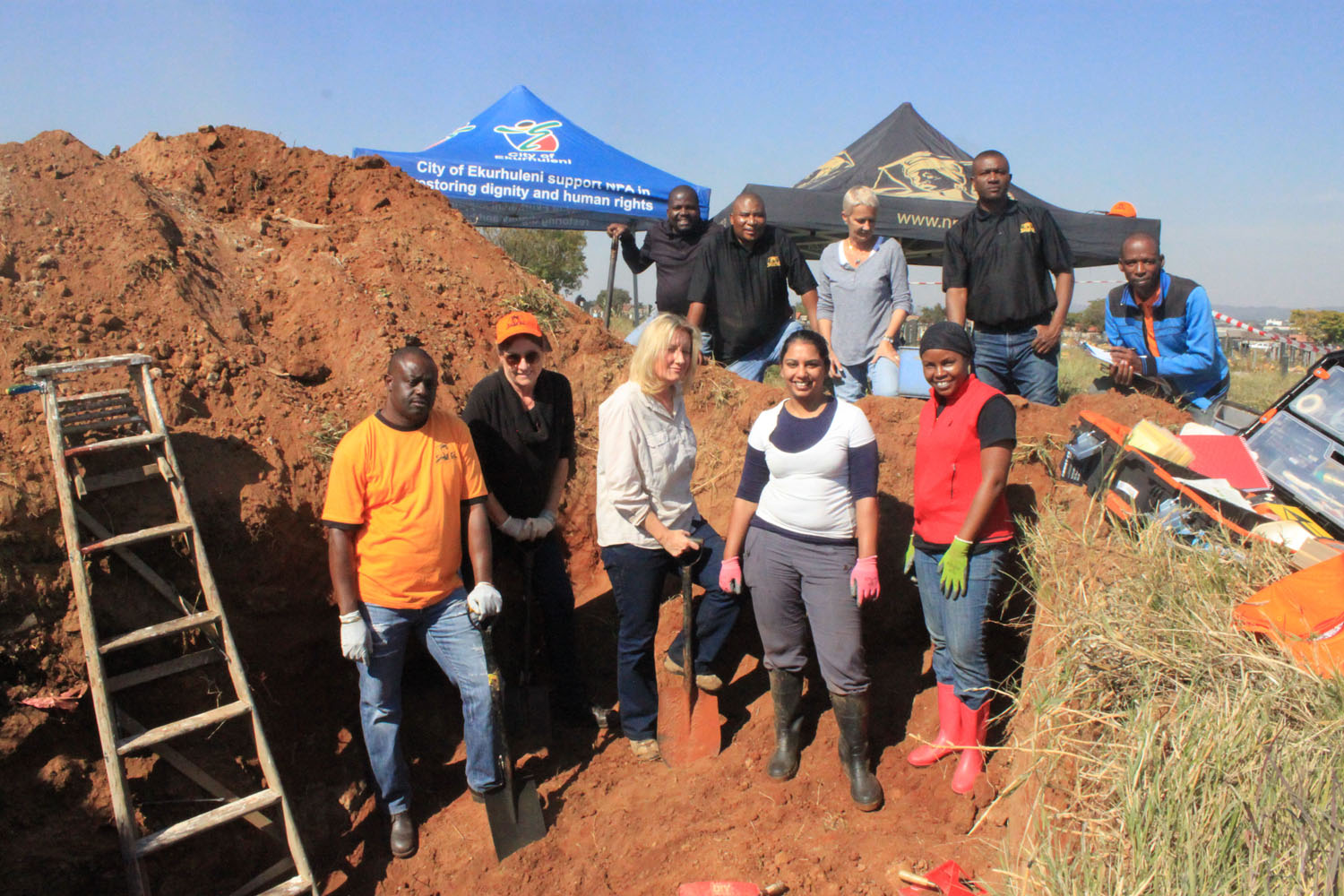
The National Prosecuting Authority’s Missing Persons Task Team. The front row from left to right: Brian Ndhlovu, Deborah Ouin, Madeleine Fullard, Dr Kavita Lakha and Kundisai Dembetembe.
It is the bodies that end up in cemeteries like Winterveldt and Mamelodi that are often the easier to find. Their corpses, according to Fullard, follow the “normal routes of death”.
In many instances after they were killed by security forces, their bodies would either be dumped, blown up with limpet mines or in the case of the Mamelodi 10, set fire to.
These bodies would later be discovered and taken to a mortuary where the state’s assembly line of death would take over.
Post-mortems would be carried out and bodies later handed to state-contracted undertakers to perform pauper burials.
Each of these processes left a paper trail that decades later Fullard was able to pick through and find clues as to their final resting places.
The other victims of apartheid death squads are more difficult to find.
They are the corpses the security forces tried hard to make disappear. They buried them on farms, burnt them to ash and threw them in rivers.
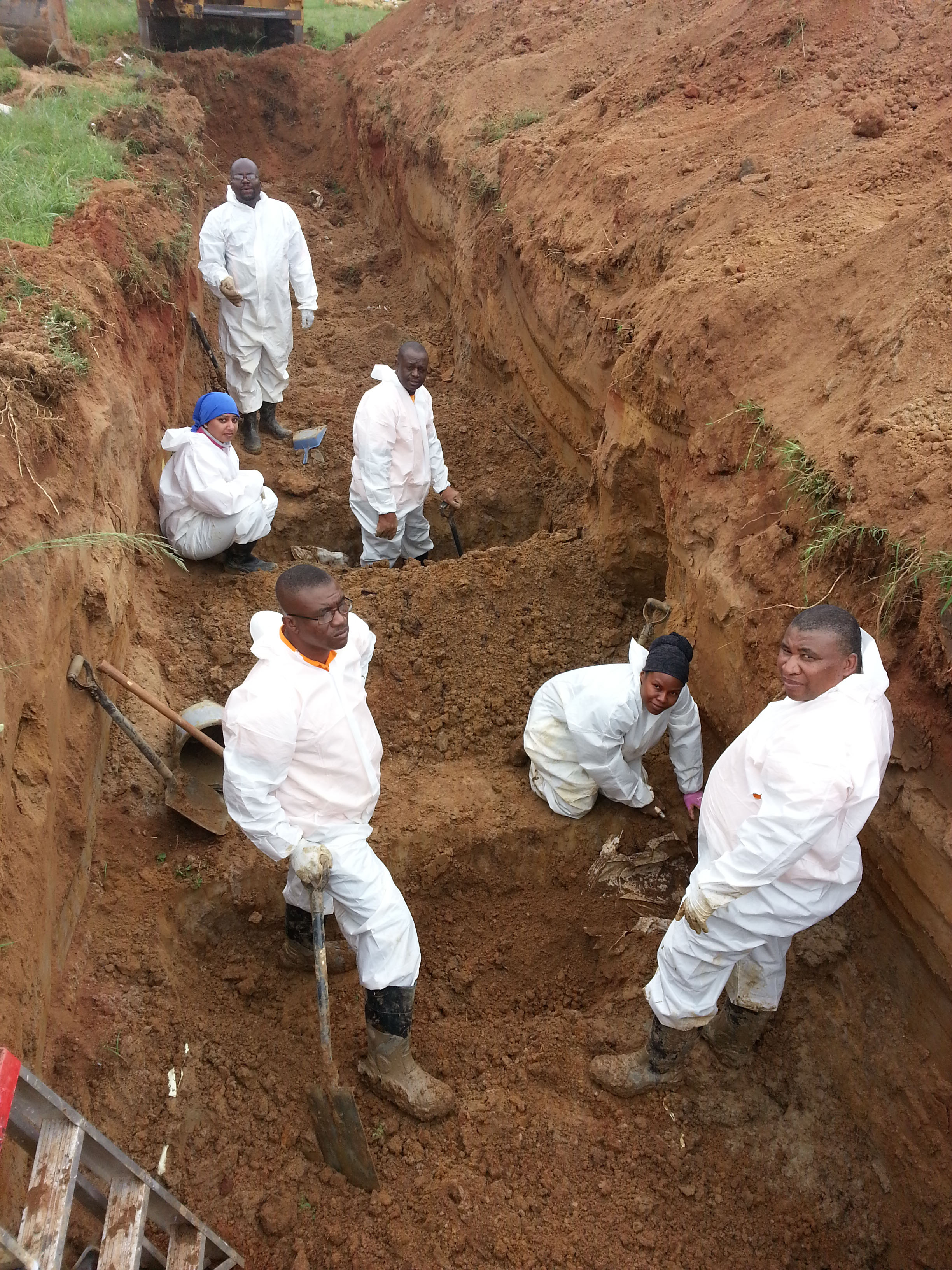
Photo: Members of the National Prosecuting Authority’s Missing Persons Task Team work on exhuming a number of graves in the Mamelodi Cemetery.
To find these graves, the men that disposed of the bodies or know where the remains were hidden need to come forward. Most refuse to do so.
“They are extremely apprehensive and unwilling and fearful. It is also equally difficult getting information from liberation movements,” says Fullard.
“There is a generalised reluctance to engage with awkward questions of past disappearances across the political spectrum.”
Some, like former Vlakplaas commander Eugene de Kock have helped point out bodies.
But many others are holding secrets and denying families the return of their loved ones.
Fullard believes that a disclosure agreement, where the informant is exempted from prosecution, might help to loosen the tongues of former apartheid operatives.
It is something that the families of the missing have also expressed a wish for.
But in the meantime, the Missing Persons Task Team is putting its hopes in new technologies like the drone and the tried old method of sifting through yellowing documents.
“Every now and then we get a little fragment here and there, we might come across a police docket that contains a statement from a detainee which has information. Those fragments do still come, so we do still believe it is worth persisting at this point,” says Fullard. DM

















 Become an Insider
Become an Insider